The light but steady rain could not erase the names on the wall.
Nor could it do away with the tears on the faces of some of the men, who recognized some of the names as they stared.
There are well over 58,000 names on the Vietnam Veterans Memorial in Washington, D.C., and Duane “Poncho” Alire of Santa Fe easily recognized at least 10 of them — all good men who went to Vietnam to serve their country and never came home.
Alire, a U.S. Army veteran who served as a long-range reconnaissance patrol leader in Vietnam in the late 1960s, said when you die, often your name dies with you.
“Unless there is a record,” he said.
Then, pointing to the vast wall inscribed with the names of the dead, he added, “And this is a record. It’s a record of that person’s name forever.”
That’s why people will remember them, he said.
Alire was one of 25 New Mexico veterans who visited the wall and several other military memorials in Washington, D.C., as part of this year’s Honor Flight of Northern New Mexico.
The nonprofit program, founded in New Mexico in 2013 by private citizens, offers military veterans from the World War II and Korean and Vietnam war eras trips to Washington, D.C., free travel, room and food so they can view the many memorials erected to honor them.
Call it a flight to honor their service, which may be overlooked or neglected as the years pass and memories of wars long ago fade away.
Not all of the men on last week’s trip saw combat, but many served in combat areas in support. Some did as little as two-year terms, and some stayed in for life — over 36 years for one U.S. Navy veteran.
Some, like Alire, worked in silence in the dense jungles, gathering military intelligence, drawing neither attention nor praise for their efforts.
Alire still walks like a jungle cat, quiet, still falling behind the assembly so he can make sure everyone in front of him gets out safely. He talked without really revealing much about his work in the jungle, where he and his small crews surreptitiously watched enemy soldiers move up and down trails with the goal of collecting intelligence data for his company.
Few talked of the bloodshed, killing and violence that permeated much of their time in uniform, though one Korean War veteran said that by working as a forward artillery observer, he basically acted as a “mass murderer,” drawing heavy artillery fire down on the enemy.
During the three-day trip, it was clear the shadow of past wars still haunted some, while others expressed regret, even guilt, that they did not serve in combat, where others would wound and be wounded, kill and be killed.
One thing the experience gave them all, some of the participants and organizers said, is a chance to talk a common language with others who signed up, put on the uniform and responded to the call of duty.
“It was the first time I got together with people who had a similar picture of the military part of our lives,” said Korean War veteran Garland Moore of Santa Fe as he packed his suitcase to leave Washington, D.C., near the end of the trip.
The U.S. Army veteran, who served as an infantryman during the war, said few noncombatants understand why warriors who saw things they wish they had not seen do not speak of them.
Nor does he wish to burden others with the dark parts of the story.
“I keep silent and carry a Bible by my side,” he said “My family is not exposed to it.”
Then, he closed his suitcase, and that was that.
Still, some veterans talked freely at breakfast and over dinner of how they got into the military and why, shared memories of difficult drill sergeants and spoke with humor about eating C-rations and the guy in the unit who always won at poker and dice — because his cards were marked and the dice were loaded.
Some kept it to a minimum when it came to reflection on wars past and their role in them.
“I did what I had to do,” said Felix Coca, a U.S. Navy veteran who served as a naval gunner during World War II and who waved away suggestions from his grandson, Michael Beltran, that perhaps he lied about his age to enlist late in 1942, almost a year after the Japanese attack on Pearl Harbor drew the United States into the war.
His own father, Coca said, served in the U.S. Army during World War I, and he himself “wanted to fight” after the attack on Pearl Harbor.
“I’ve always been proud of it,” he said. “Always.”
And what about the possibility he added a year to his age in order to enlist? Coca flashed a wry smile that suggested he didn’t give a damn. After all, who cares after all these years?
Pride and joy filled the faces of the veterans — all men on this particular flight — as they moved through airports, bus stops and memorials and were cheered and applauded by passersby who learned of their mission.
Along the way, the captains of the flights made special announcements to the passengers honoring the veterans onboard. On two separate flights — one going to the East Coast, one coming back — the captains played Lee Greenwood’s patriotic country ballad “God Bless the U.S.A.,” prompting the veterans and passengers to sing along.
And when they departed the plane at the Baltimore/Washington International Thurgood Marshall Airport, the veterans were delightfully stunned by the appearance of a tall man in Revolutionary War-era attire who rang a brass hand call bell and welcomed the veterans before leading them through the airport to waiting buses.
The man was Fred Taylor of Annapolis, Md., an actor, tour guide and retired government employee who is known in the region as Squire Frederick, the official town crier for Annapolis.
The crowd, as they like to say, went wild, applauding and providing welcoming words of music to the veterans’ ears: “Thank you for your service!”
Walking through the airport, Ladell Collier, a U.S. Army veteran of the Vietnam War who now lives in Eagle Nest, said he could not believe the response. In an interview the following day, the Honor Flight participate said back in the days when he served it seemed like “people were not happy to see us come home from Vietnam.”
He said he was “overwhelmed” by the sense of patriotism he saw among the people he encountered on the trip “because I’ve been going 50 years [since the war] and nobody seemed to care.”
One more — or one last — opportunity to visit
According to the national Honor Flight Network website, there are over 125 different, independent Honor Flight hubs in the United States. Their goal is to honor veterans who “served during World War II, the Korean War, the Vietnam War and veterans of any service era who are critically ill.”
Adeline Herrera, who serves as president of the Honor Flight of Northern New Mexico, said her father was a U.S. Army veteran and her first husband, now deceased, served in the U.S. Navy. She got involved to commemorate their commitment to duty.
“I wanted to honor my dad because he never wanted to talk about his military service,” she said in an interview during the bus ride to the World War II, Korean War and Vietnam Veterans memorials in the capital city. All three monuments are near the Lincoln Memorial.
Each Honor Flight trip costs about $100,000, she said, money the nonprofit must raise from private sources.
While veterans travel free, those who accompany them, like caregivers, must pay $1,500, which covers all fees, travel fares, hotel bills and meals. Finding a corporate sponsor or donor to help pick up the tab would be ideal, she said.
A lot of older veterans, she said, still have not visited any of the memorials and have not seen “how the country is honoring them. Every veteran who goes on the trip makes me think of my dad. I think he would be proud of me.”
She said she has seen many a veteran weep in front of all three of the memorials, particularly the Vietnam Veterans Memorial.
For some of the aged veterans, time may be a barrier to seeing the wall. That’s particularly true of those who served in World War II. According to the U.S. Department of Veterans Affairs statistics, about 167,000 of the 16 million Americans who served in World War II were still alive in 2022.
Of New Mexico’s roughly 144,000 veterans, just 1,131 who are still living served solely in World War II, according to data provided by the New Mexico Department of Veteran Services.
However, nearly 300 World War II veterans also served in Korea and/or Vietnam, pushing the number up to about 1,400.
Herrera said her organization is getting fewer and fewer applications from World War II veterans as time goes on.
One of those veterans on this year’s trip was 98-year-old Thomas Edward Jewell, a Black U.S. Army veteran who served in a segregated unit in the Pacific campaign to take Japanese-held islands.
His son, former state Judge Tommy Jewell, kept a loving watch and held an umbrella over his wheelchair-bound father as they moved around the World War II Memorial — a circular stone monument that includes a Freedom Wall of 4,000 gold stars commemorating the more than 400,000 Americans who died in the war.
Watching his aged father smile at the sight, the younger Jewell said, “You never know, but this may be my last opportunity to do this.”
Jewell said his father, who spent decades working as a teacher in New Mexico, rarely spoke of his war experience. But the younger Jewell recalled his father telling him the amusing story of watching a movie during a lull in the fighting on Saipan and then discovering, as the movie ended and the lights came up in the outdoor theater arena, some Japanese soldiers sitting not far away, enjoying a piece of American cinema.
“We’re right there with the enemy; everyone was together there watching the movie,” Jewell said, quoting his dad.
Jewell was not the only child — or grandchild — serving as a guardian to a veteran.
Dacota Garcia accompanied her grandfather, Arthur John Robert, a U.S. Navy veteran from Albuquerque who served from 1969-75. She said he was responsible for delivering weapons to American troops during the war, and he doesn’t like to talk about it.
He helped raise her when she was a child, she said, and now she wants to let him know she loves him and honors his service.
Even as the bus approached the trio of memorials in the city, she said her grandfather had already teared up some over the memories and the bonding with other veterans.
“He got me crying because he cries,” she said.
The trip wasn’t all perfect. Garcia said she had a little dust-up with a woman — a civilian — at one of the airports after the woman criticized the fact the Honor Guard recipients were allowed to board the plane first, even though the woman “paid extra” for her seat.
Garcia said she could not control her tongue. She told the woman, “They paid with the lives of those who didn’t come back.”
And again, that was that.
Coming home
The tour included trips to Arlington Cemetery and the nearby U.S. Air Force Memorial, as well as the National 9/11 Pentagon Memorial.
All evoked memories among many of the veterans.
Randal Henry, a Clovis native who served in the U.S. Army in Vietnam in the mid-1960s, stood near the Pentagon building and noted there are a lot of heroes in the world, including civilian administrators who were just “sitting in their office in the Pentagon doing their own thing on 9/11 — they didn’t know it was coming.”
Henry, who now lives in Farmington, said the bond between him and the other veterans was cemented almost immediately “because we’ve all been through it.”
Robert Barnett, a U.S. Navy veteran with over 35 years in uniform, agreed. Munching on a sandwich at an airport awaiting the final leg of the journey home, he said he, like Alire, found a lot of names of people he served with on the Vietnam Veterans Memorial wall.
They and others like him are the real heroes, he said, because they “are the ones who never had the chance to come home, to become dads or uncles or granddads and watch their children grow up. That was the ultimate sacrifice.”
Upon arriving at the Albuquerque International Sunport on Thursday night, the veterans got one last unexpected gift: a hearty welcome from active-duty military personnel, who lined the walkways of the airport to applaud their comrades in arms.
Then, once the veterans reached one of the lobby areas below, they got a second wave of welcomes from a crowd of well over 100 civilians, family members, friends and passengers.
Hugs, tears and laughter followed.
And there was little reason to say anything else but, “Thank you.”

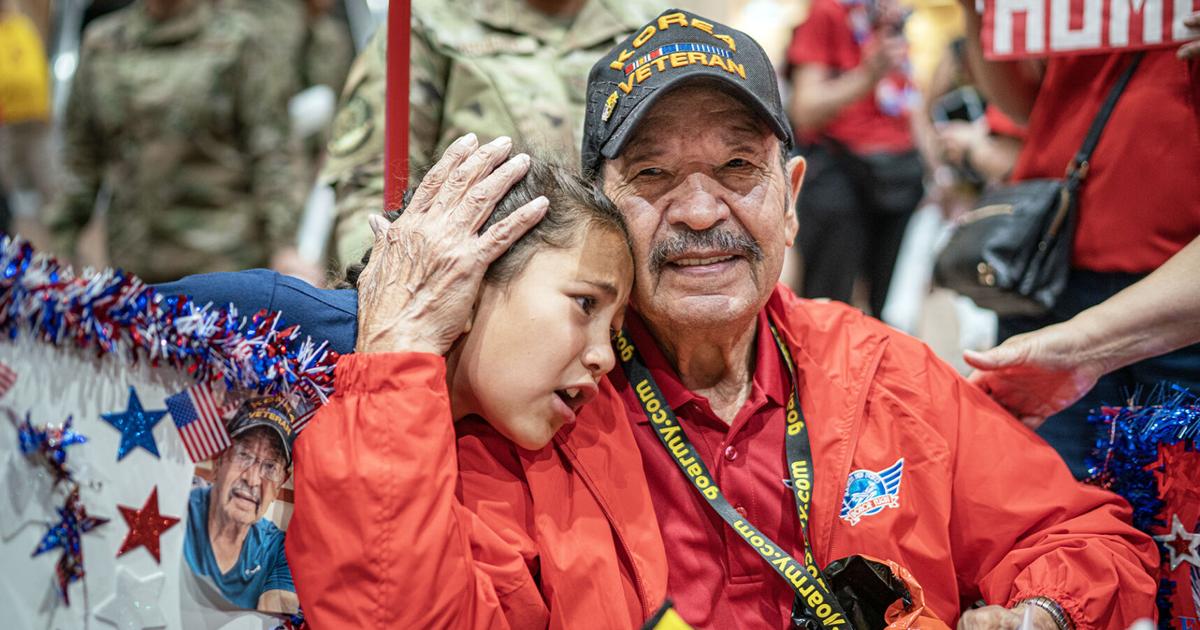





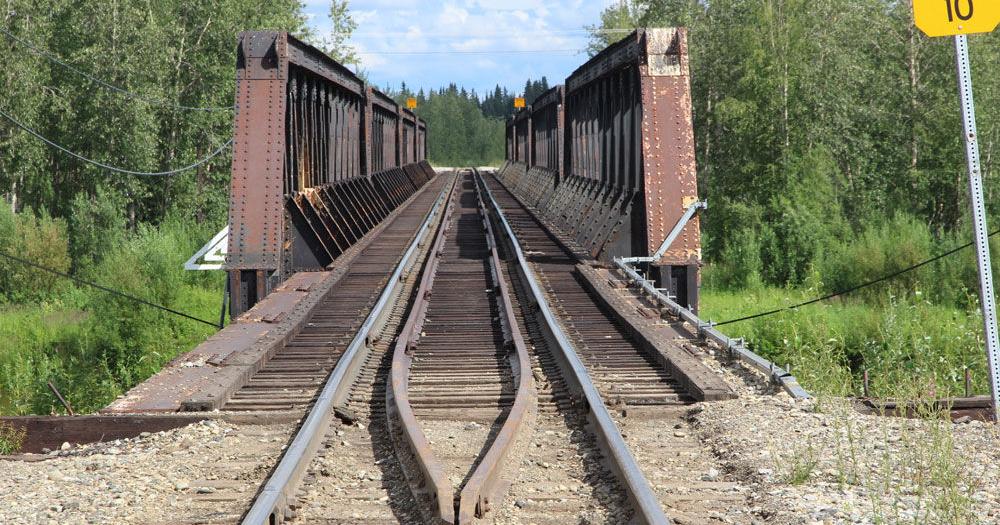


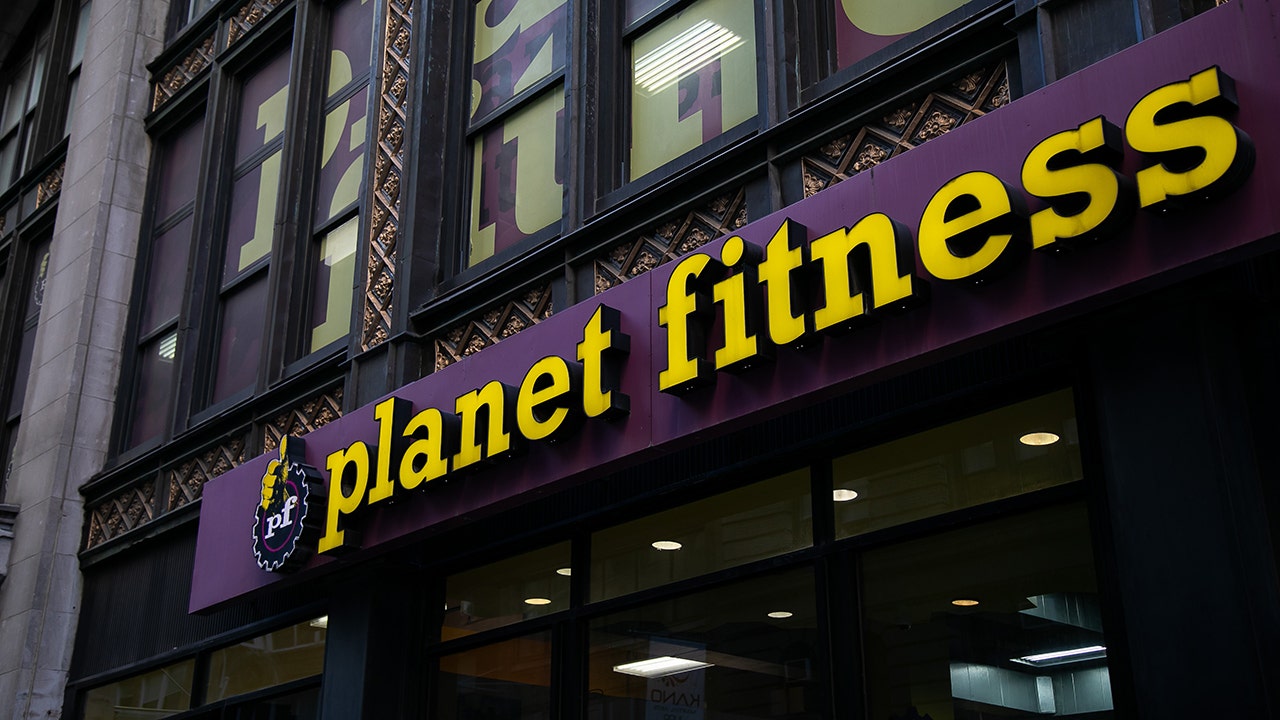


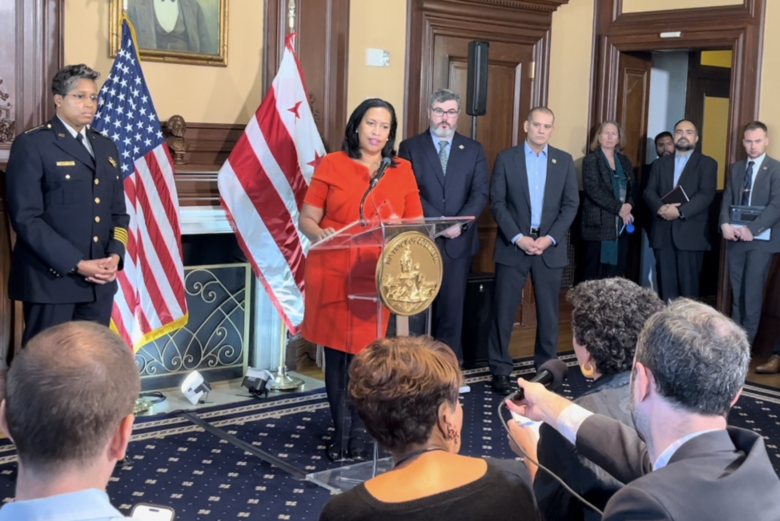






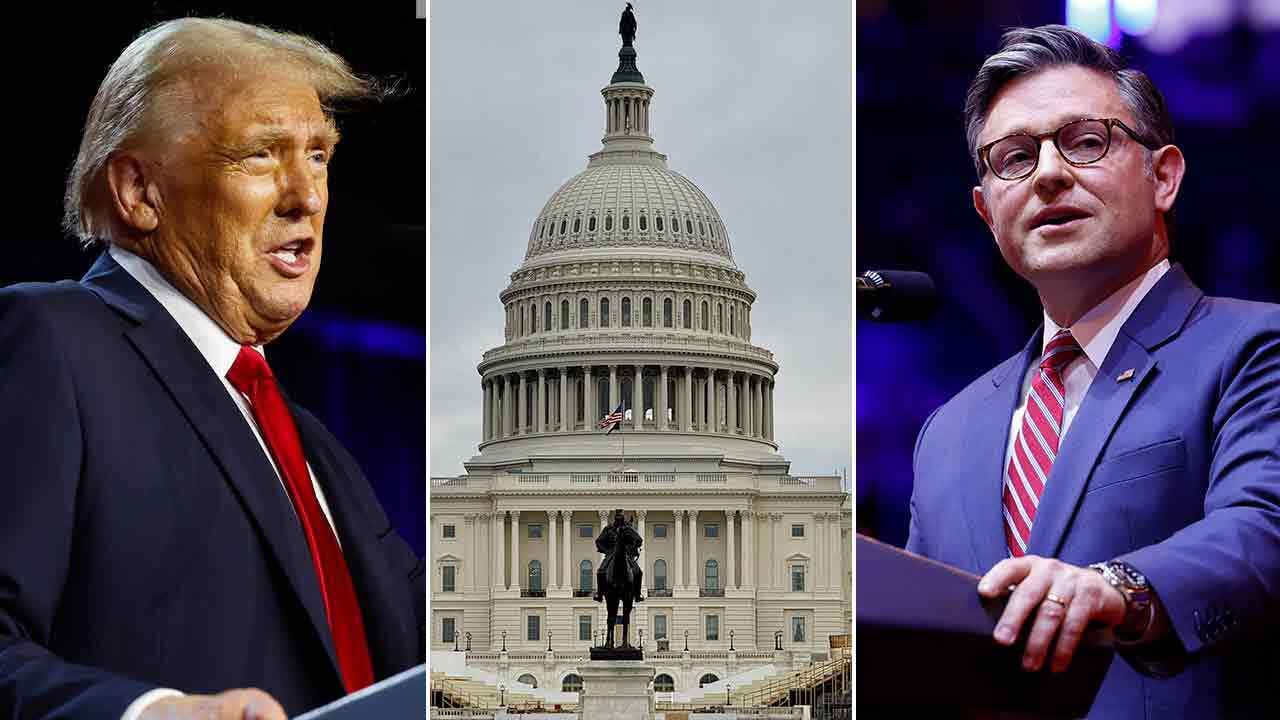


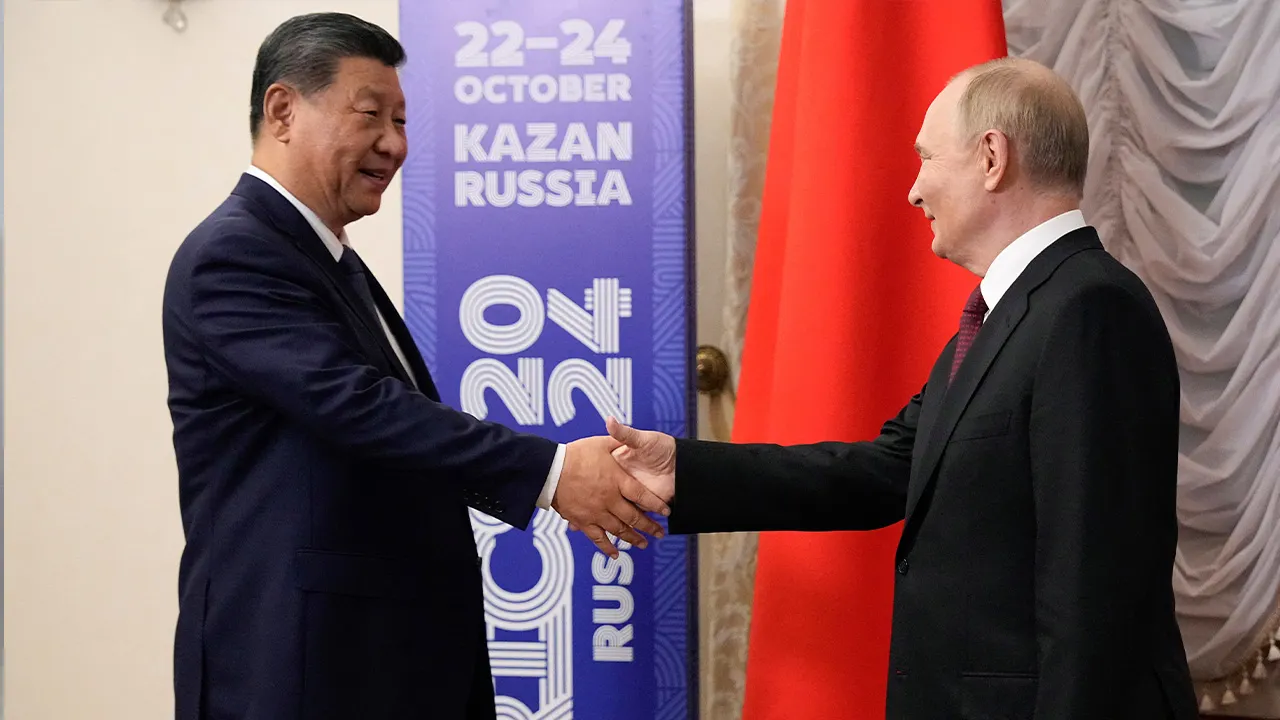
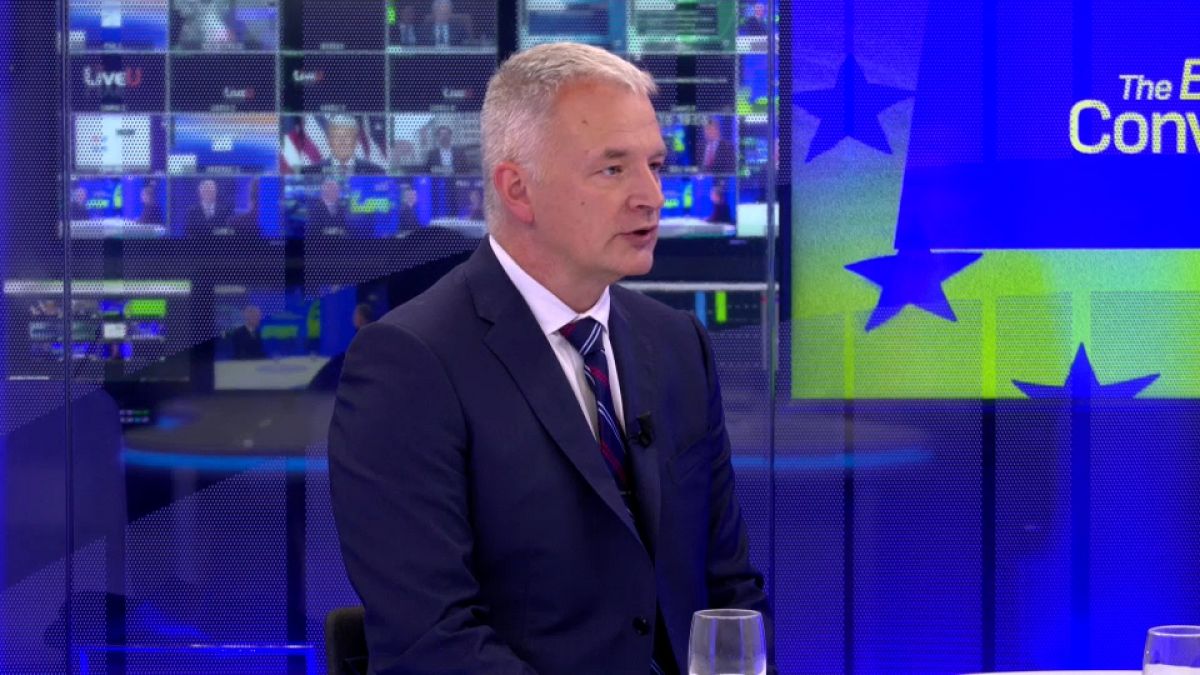




/cdn.vox-cdn.com/uploads/chorus_asset/file/25538361/247196_Echo_Spot_Review_8A0A1511_CVirginia.jpg)


/cdn.vox-cdn.com/uploads/chorus_asset/file/25724877/Super_Nintendo_World.png)